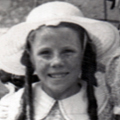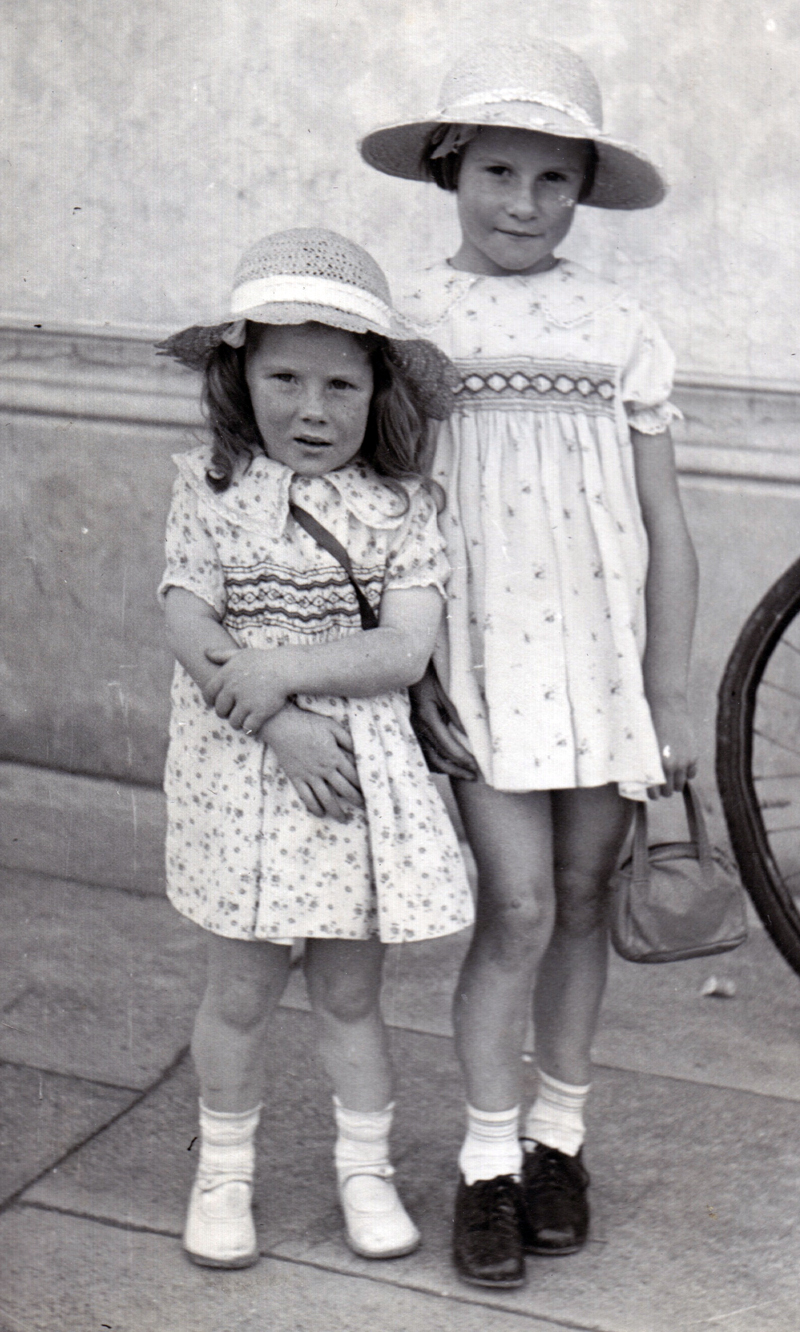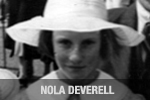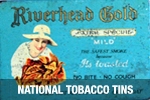 Beth Driver
Beth Driver
Beth’s family – Munro, have a long history in the Port. After arriving in New Zealand from the UK aboard the Charlotte Jane into Lyttleton in 1850, they settled in the Port in the 1880s. Originally building three homes on land they purchased in Hardinge Road, that number expanded as Beth’s great grandparents’ nine children grew up and built houses themselves in the area. Beth’s grandfather, the oldest of these children built his own house on Battery Road, and it was here that she grew up. Her grandfather had been a mariner in both the sail and steam eras, and had one of the first steam trawlers in the Port. After he retired, he made fishing nets, and continued to be a well-known fixture on the waterfront. Beth’s father worked in transportation firstly for the Napier-Gisborne transport, then for many years as Outside Foreman for FG Smiths.
Beth remembers vividly the many characters of the Port in those days, like George Lovell who kept blackball sweets and sultanas in his pockets to give to the school kids. The people were working class, close-knit and supportive, almost everyone knowing everyone else. Beth remembers that this feeling made it very easy and natural to makes friends. Her father would regularly stop in his car and give people a lift when he saw them on the side of the road or waiting at the bus stop.
Another example of this community spirit that was widely known across the district was the annual Port School Ball, ‘the’ event on the local social calendar, which Beth’s father managed after taking over from Alec Neil. The Port School Ball was reputed to be the biggest dance event on a wooden floor in the southern hemisphere, and was a huge source of pride for the Port and chance to show itself off to the wider community. It raised funds for the school, and partly accounted for the good facilities the kids enjoyed there such as the hall and pool. Held over two, and some years even three nights, it offered music, dancing and an excellent supper. The final night was children’s night where adults were only allowed on the floor later in the evening. The highlight for the children was a fancy-dress/costume parade and folk-dancing. Supper was done in sittings – 200 people at a time, with up to 9 sittings in an evening. Crayfish was the mainstay, and was caught and donated by local companies. All the preparation and cooking was done by the local women. In the late 1940’s tickets cost about 10 shillings. Music was a big feature, with top bands like Bill Brown’s appearing, always with a second troupe to cover and keep the dancing continuous when the first band took a break.
A small army of local Port community volunteers were involved in the preparation of the hall – the biggest of the local woolsheds, which was not in use over the winter months. First the wool oil was scrubbed off the floor, then left to dry for several weeks. Then it was sprinkled with ball-room powder and polished to make it slippery and shiny. This was achieved by stitching wood-wool to the bottom of wool bales, dragging them behind a tractor around and around the hall in circles. “It was quite some sight to see” Beth recalls. It is hard for anyone outside of New Zealand to imagine this scene. When that was done, the huge areas were surrounded with decorations including crepe paper flowers made by the ladies, and palm leaves, obligingly cut from the Kennedy Road palm trees by the City Council Parks and Reserves Team.
Beth recalls the war years, when her mum would roll her in an eiderdown and joke that she was going to hide her from the Germans. The family had a “Watch out in the black out” sign kept on laundry window to remind them to shut off the lights at night. On the mantle piece was a photo of her uncle, who was serving in the army, and the family prayed for him every night. At the Port School they had air-raid shelters by the dressing-sheds, and used to have the occasional practise drill. In their shelter at home – a big hole in the ground in the garden, it seemed the frogs were the only ones making use of it. She also remembers “fun session” fundraiser events at the Buffalo Hall, helping her mother baking ANZAC biscuits then carefully wrapping and soldering them in a tin to send to troops overseas, and collecting fennel seed that was send away to make blood clotting supplies for the troops.
Beth attended the Port School and on the day Japan surrendered, her teacher lifted each of the children up so they could reach and ring the school bell in celebration.
Beth went on to high school and trained as a teacher, working later at the same school she had attended – The Port Primary School.
Related Images
Jim Blundell – War Joining up Into camp
 Jim Blundell – War Joining up Into camp
Jim Blundell – War Joining up Into camp Jim Blundell – Provincialism and condescension
Jim Blundell – Provincialism and condescension Jim Blundell – Merchant Navy
Jim Blundell – Merchant Navy Jim Blundell – Home guard and Manpower work
Jim Blundell – Home guard and Manpower work Jim Blundell – Hard men combined
Jim Blundell – Hard men combined Alan Goss – Hardtimes Earthquake
Alan Goss – Hardtimes Earthquake Alan Goss – Entertainment at the Port
Alan Goss – Entertainment at the Port Alan Goss – The Port People Shaped life
Alan Goss – The Port People Shaped life Alan Goss – Intro Family Growing up
Alan Goss – Intro Family Growing up Audrey Bailey – Lagoon School
Audrey Bailey – Lagoon School Audrey Bailey – Local characters
Audrey Bailey – Local characters Audrey Bailey – The Port How its changed
Audrey Bailey – The Port How its changed






